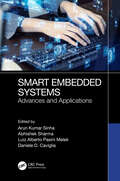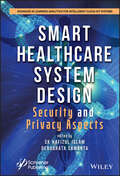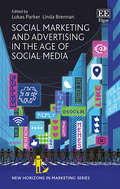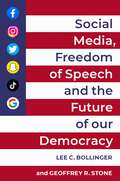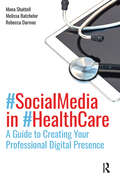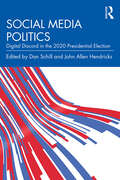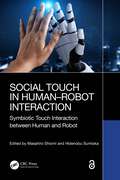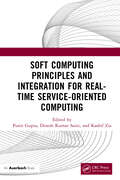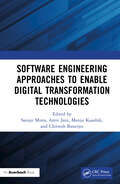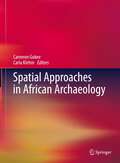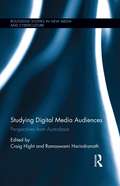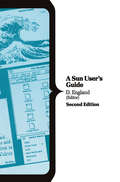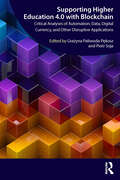- Table View
- List View
Smart Contracts: Technological, Business and Legal Perspectives
This book brings together a series of contributions by leading scholars and practitioners to examine the main features of smart contracts, as well as the response of key stakeholders in technology, business, government and the law. It explores how this new technology interfaces with the goals and content of contract law, introducing and evaluating several mechanisms to improve the 'observability' and reduce the costs of verifying contractual obligations and performance. It also outlines various 'design patterns' that ensure that end users are protected from themselves, prevent cognitive accidents, and translate expectations and values into more user-oriented agreements. Furthermore, the chapters map the new risks associated with smart contracts, particularly for consumers, and consider how they might be alleviated. The book also discusses the challenge of integrating data protection and privacy concerns into the design of these agreements and the broad range of legal knowledge and skills required. The case for using smart contracts goes beyond 'contracts' narrowly defined, and they are increasingly used to disrupt traditional models of business organisation. The book discusses so-called decentralised autonomous organisations and decentralised finance as illustrations of this trend.This book is designed for those interested in looking to deepen their understanding of this game-changing new legal technology.
Smart Distributed Embedded Systems for Healthcare Applications (Explainable AI (XAI) for Engineering Applications)
This book discusses the applications and optimization of emerging smart technologies in the field of healthcare. It further explains different modeling scenarios of the latest technologies in the healthcare system and compares the results to better understand the nature and progress of diseases in the human body, which would ultimately lead to early diagnosis and better treatment and cure of diseases with the help of distributed technology. Covers the implementation models using technologies such as artificial intelligence, machine learning, and deep learning with distributed systems for better diagnosis and treatment of diseases. Gives in-depth review of technological advancements like advanced sensing technologies such as plasmonic sensors, usage of RFIDs, and electronic diagnostic tools in the field of healthcare engineering. Discusses possibilities of augmented reality and virtual reality interventions for providing unique solutions in medical science, clinical research, psychology, and neurological disorders. Highlights the future challenges and risks involved in the application of smart technologies such as cloud computing, fog computing, IOT, and distributed computing in healthcare. Confers to utilize the AI and ML and associated aids in healthcare sectors in the post-Covid 19 period to revitalize the medical setup. Contributions included in the book will motivate technological developers and researchers to develop new algorithms and protocols in the healthcare field. It will serve as a vast platform for gaining knowledge regarding healthcare delivery, health- care management, healthcare in governance, and health monitoring approaches using distributed environments. It will serve as an ideal reference text for graduate students and researchers in diverse engineering fields including electrical, electronics and communication, computer, and biomedical fields.
Smart Embedded Systems: Advances and Applications
"Smart Embedded Systems: Advances and Applications" is a comprehensive guide that demystifies the complex world of embedded technology. The book journeys through a wide range of topics from healthcare to energy management, autonomous robotics, and wireless communication, showcasing the transformative potential of intelligent embedded systems in these fields. This concise volume introduces readers to innovative techniques and their practical applications, offers a comparative analysis of wireless protocols, and provides efficient resource allocation strategies in IoT-based ecosystems. With real-world examples and in-depth case studies, it serves as an invaluable resource for students and professionals seeking to harness the power of embedded technology to shape our digital future. Salient Features: 1. The book provides a comprehensive coverage of various aspects of smart embedded systems, exploring their design, implementation, optimization, and a range of applications. This is further enhanced by in-depth discussions on hardware and software optimizations aimed at improving overall system performance. 2. A detailed examination of machine learning techniques specifically tailored for data analysis and prediction within embedded systems. This complements the exploration of cutting-edge research on the use of AI to enhance wireless communications. 3. Real-world applications of these technologies are extensively discussed, with a focus on areas such as seizure detection, noise reduction, health monitoring, diabetic care, autonomous vehicles, and communication systems. This includes a deep-dive into different wireless protocols utilized for data transfer in IoT systems. 4. This book highlights key IoT technologies and their myriad applications, extending from environmental data collection to health monitoring. This is underscored by case studies on the integration of AI and IoT in healthcare, spanning topics from anomaly detection to informed clinical decision-making. Also featured is a detailed evaluation and comparison of different system implementations and methodologies. This book is an essential read for anyone interested in the field of embedded systems. Whether you're a student looking to broaden your knowledge base, researchers looking in-depth insights, or professionals planning to use this cutting-edge technology in real-world applications, this book offers a thorough grounding in the subject.
Smart Healthcare System Design: Security and Privacy Aspects (Advances in Learning Analytics for Intelligent Cloud-IoT Systems)
The purpose of this book is to help achieve a better integration between the work of researchers and practitioners in a single medium for capturing state-of-the-art IoT solutions in healthcare applications to address how to improve the proficiency of wireless sensor networks (WSNs) in healthcare. It explores possible automated solutions in everyday life, including the structures of healthcare systems built to handle large amounts of data, thereby improving clinical decisions; which is why this book will prove invaluable to professionals who want to increase their understanding of recent challenges in the IoT-enabled healthcare domain. The 14 chapters address various aspects of the IoT system, such as design challenges, theory, various protocols, and implementation issues, and also include several case studies. Smart Healthcare System: Security and Privacy Aspects covers the introduction, development, and applications of smart healthcare models that represent the current state-of-the-art of various domains. The primary focus will be on theory, algorithms, and their implementation targeted at real-world problems. It will deal with different applications to give the practitioner a flavor of how IoT architectures are designed and introduced into various situations. More particularly, this volume consists of 14 chapters contributed by authors well-versed in the subject who are devoted to reporting the latest findings on smart healthcare system design.
Smittestopp − A Case Study on Digital Contact Tracing (Simula SpringerBriefs on Computing #11)
This open access book describes Smittestopp, the first Norwegian system for digital contact tracing of Covid-19 infections, which was developed in March and early April 2020. The system was deployed after five weeks of development and was active for a little more than two months, when a drop in infection levels in Norway and privacy concerns led to shutting it down. The intention of this book is twofold. First, it reports on the design choices made in the development phase. Second, as one of the only systems in the world that collected population data into a central database and which was used for an entire population, we can share experience on how the design choices impacted the system's operation. By sharing lessons learned and the challenges faced during the development and deployment of the technology, we hope that this book can be a valuable guide for experts from different domains, such as big data collection and analysis, application development, and deployment in a national population, as well as digital tracing.
Social Engineering in Cybersecurity: Threats and Defenses
In today’s digitally interconnected world, the threat landscape has evolved to include not just sophisticated technical exploits but also the art of human manipulation. Social engineering attacks have emerged as a formidable and often underestimated threat to information security. The primary aim of this textbook is to provide a comprehensive and in-depth exploration of social engineering attacks. The book seeks to equip cybersecurity professionals, IT practitioners, students, and anyone concerned with information security with the knowledge and tools needed to recognize, prevent, and mitigate the risks posed by social engineering. The scope of this textbook is broad and multifaceted. It covers a wide range of social engineering attack vectors, including phishing, vishing, pretexting, baiting, tailgating, impersonation, and more. Each attack vector is dissected, with detailed explanations of how they work, real-world examples, and countermeasures. Key Features • Comprehensive Coverage: Thorough exploration of various social engineering attack vectors, including phishing, vishing, pretexting, baiting, quid pro quo, tailgating, impersonation, and more. • Psychological Insights: In-depth examination of the psychological principles and cognitive biases that underlie social engineering tactics. • Real-World Case Studies: Analysis of real-world examples and high-profile social engineering incidents to illustrate concepts and techniques.• Prevention and Mitigation: Practical guidance on how to recognize, prevent, and mitigate social engineering attacks, including security best practices. • Ethical Considerations: Discussion of ethical dilemmas and legal aspects related to social engineering that emphasizes responsible use of knowledge. This comprehensive textbook on social engineering attacks provides a deep and practical exploration of this increasingly prevalent threat in cybersecurity. It covers a wide array of attack vectors, including phishing, vishing, pretexting, and more, offering readers an in-depth understanding of how these attacks work. The book delves into the psychology behind social engineering and examines the cognitive biases and emotional triggers that make individuals susceptible. Real-world case studies illustrate concepts and techniques while practical guidance equips readers with the knowledge to recognize, prevent, and mitigate social engineering threats.
Social Marketing and Advertising in the Age of Social Media (New Horizons in Marketing series)
Reviewing and analysing the most relevant concepts, theories and strategies related to the field, this timely book reveals what makes for strong social marketing and social advertising campaigns. With a comprehensive understanding of social advertising models and their applications, chapters present original case studies and scenarios from international researchers to illustrate strategies and concepts in practice. Exploring the mechanics of social media, contributors highlight what makes a successful campaign. They evaluate the use and impact of emotions in social power, exploring the power of storytelling, whilst weighing ethical implications. The book covers important and upcoming areas of interest in the field including the rise of social media influencers, the use of memes, the functionality of social media, and the use of fear, guilt and shame in communications campaigns as well as positive emotions. This book will assist marketing academics and practitioners in the development of successful campaigns as it highlights not only what these campaigns look like, but also why they achieve success. It will also prove an excellent guide for government organisations and public policy makers interested in using social marketing for health promotion and social change.
Social Media, Freedom of Speech, and the Future of our Democracy
A broad explanation of the various dimensions of the problem of "bad" speech on the internet within the American context. One of the most fiercely debated issues of this era is what to do about "bad" speech-hate speech, disinformation and propaganda campaigns, and incitement of violence-on the internet, and in particular speech on social media platforms such as Facebook and Twitter. In Social Media, Freedom of Speech, and the Future of our Democracy, Lee C. Bollinger and Geoffrey R. Stone have gathered an eminent cast of contributors--including Hillary Clinton, Amy Klobuchar, Sheldon Whitehouse, Newt Minow, Cass Sunstein, Jack Balkin, Emily Bazelon, and others--to explore the various dimensions of this problem in the American context. They stress how difficult it is to develop remedies given that some of these forms of "bad" speech are ordinarily protected by the First Amendment. Bollinger and Stone argue that it is important to remember that the last time we encountered major new communications technology-television and radio-we established a federal agency to provide oversight and to issue regulations to protect and promote "the public interest." Featuring a variety of perspectives from some of America's leading experts on this hotly contested issue, this volume offers new insights for the future of free speech in the social media era.
Social Media in Health Care: A Guide to Creating Your Professional Digital Presence
A practical, essential guide to social media for health care professionals, Social Media in Health Care equips readers with the skills to build their online brand, share their professional knowledge with a wider audience, and become a trusted source of information and thought leader in their field.Authors Mona Shattell, Melissa Batchelor, and Rebecca Darmoc explain the principles behind building a respected digital presence and developing meaningful online connections, while providing practical tips for navigating the five major social media platforms: Twitter, LinkedIn, Facebook, Instagram, and YouTube. Everyone from health care students to the most seasoned professionals will benefit from the 3C’s Framework outlined in the book: Consume, Contribute, and Create.Social Media in Health Care can be read cover to cover or used as quick reference guide. Topics include: Exercises for novice, intermediate, and advanced users Best practices for consuming, sharing, and creating content Tips for readers to build their social media presence and professional brand Recommendations for using digital platforms to expand professional networks Patient privacy concerns and how to avoid ethical pitfalls Social media can start conversations and serve as an open line of communication between peers, the public, and patients. Social Media in Health Care guides members of the medical community in how to use social media to help educate the public and specific patient communities about health care and health policy, make connections with industry leaders and peers, and enhance their professional reputation.
Social Media Politics: Digital Discord in the 2020 Presidential Election
Social media and social networking services are integrated into the American political process and have profoundly influenced political communication and participation. Social media platforms have transformed the political landscape by revolutionizing information dissemination, citizen engagement, and public opinion formation and change. Politicians use social media to communicate directly with voters in an unmediated and unfiltered manner. Comparatively, voters use social media to follow the latest messaging from politicians accompanied by demonstrating their support for particular politicians. This book is a comprehensive examination of the role of digital and social media in the 2020 U.S. presidential election. Political discourse during the 2020 election revealed political disharmony and a deep political division among vast swaths of Americans that was powered, in part, by social media. This book reveals how digital and social media have reshaped power dynamics by altering the relationships among citizens, politicians, and traditional media outlets, the emergence of new influencers, and the impact of online activism on policy agendas.This book, Social Media Politics, includes scholars with varied backgrounds and experience, using both quantitative and qualitative methodologies, from leading research institutions around the nation. Students, scholars, and practitioners will gain new knowledge to more clearly understand the role social media played in the 2020 presidential campaign.
Social Touch in Human–Robot Interaction: Symbiotic touch interaction between human and robot
In this book for researchers and students, editors Shiomi and Sumioka bring together contributions from researchers working on the CREST project at ATR Deep Interaction Laboratories, a world leader in social robotics, to comprehensively describe robot touch systems from hardware to applications.Appropriate touch from robots to humans is essential for social robots, but achieving this requires various solutions at every stage of the touch process. Through this book, readers will gain an understanding of the needs, essential systems and communication cues, behaviour designs, and real‑world issues for social touch applications. This book compiles and updates technical and empirical research that was previously scattered throughout the literature into a single volume. Through individually authored chapters addressing various elements of ATR’s CREST project, this book tackles key areas where understanding is needed to realize acceptable touch interaction, including pre‑touch interaction, interaction design for touching and being touched, behaviour changes caused by touch interaction, and applications of social touch interaction. It introduces a touch sensor and robots developed by the authors, including several touch‑related behaviours and design policies. This approach will enable readers to easily apply this knowledge to their own social robotics programs. This book is invaluable for anyone who wishes to understand and develop social robots that physically interact with people.It is most beneficial for researchers and upper undergraduate and graduate students in the fields of human–robot/agent/computer interaction and social touch interaction and those in the broader fields of engineering, computer science, and cognitive science.
Socio-Informatics
The book is an exploration of the theoretical, conceptual and methodological foundations of human-centred design. Specifically, it critically examines the notion of 'practice' and argues for an understanding of the concept which emanates from engagement with design problems rather than simply from social scientific theory. The contributors to the book in their various ways all subscribe to a systematic account of how practice- oriented studies can inform design. Using the perspective of 'grounded design', it pursues a long term view of the design process, arguing for user engagement from the very earliest stages of design policy, including methods for understanding user practices to inform initial design policies up to and including processes of appropriation as technologies are embedded in contexts of use. Grounded design is a perspective which also deals with the vexed problem of appropriate generalization in design studies and the kinds of cross-comparison that can usefully be done. The book contains a number of case studies which exemplify these themes, some of which are rooted in the use of technology in organizational contexts, others of which deal with design in contexts such as care of the elderly, firefighting and multicultural education.
Soft Computing Principles and Integration for Real-Time Service-Oriented Computing
In recent years, soft computing techniques have emerged as a successful tool to understand and analyze the collective behavior of service- oriented computing software. Algorithms and mechanisms of self- organization of complex natural systems have been used to solve problems, particularly in complex systems, which are adaptive, ever- evolving, and distributed in nature across the globe. What fits more perfectly into this scenario other than the rapidly developing era of Fog, IoT, and Edge computing environment? Service- oriented computing can be enhanced with soft computing techniques embedded inside the Cloud, Fog, and IoT systems.Soft Computing Principles and Integration for Real-Time Service-Oriented Computing explores soft computing techniques that have wide application in interdisciplinary areas. These soft computing techniques provide an optimal solution to the optimization problem using single or multiple objectives.The book focuses on basic design principles and analysis of soft computing techniques. It discusses how soft computing techniques can be used to improve quality-of-service in serviceoriented architectures. The book also covers applications and integration of soft computing techniques with a service- oriented computing paradigm. Highlights of the book include: A general introduction to soft computing An extensive literature study of soft computing techniques and emerging trends Soft computing techniques based on the principles of artificial intelligence, fuzzy logic, and neural networks The implementation of SOC with a focus on service composition and orchestration, quality of service (QoS) considerations, security and privacy concerns, governance challenges, and the integration of legacy systems The applications of soft computing in adaptive service composition, intelligent service recommendation, fault detection and diagnosis, SLA management, and security Such principles underlying SOC as loose coupling, reusability, interoperability, and abstraction An IoT based framework for real time data collection and analysis using soft computing
Software Ecosystems: Tooling and Analytics
This book highlights recent research advances in various domains related to software ecosystems such as library reuse, collaborative development, cloud computing, open science, sentiment analysis and machine learning. A key aspect of software ecosystems is that software products belong to ever more interdependent networks of co-evolving software components. The ever-increasing importance of social coding platforms has made software ecosystems indispensable to software practitioners, in commercial as well as open-source settings.The book starts with an introductory chapter that provides a historical account of the origins of software ecosystems. It provides the necessary context about the domain of software ecosystems by highlighting its different perspectives, definitions, and representations. It also exemplifies the variety of software ecosystems that have emerged during the previous decades. The remaining book is composed of five parts: Part I contains two chapters on software ecosystem representations, Part II two chapters that focus on complementary ways and techniques of analyzing software ecosystems. Next, Part III includes two chapters that focus on aspects related to the evolution within software ecosystems, while Part IV looks at workflow automation and infrastructure-as-code ecosystems. Finally, Part V focuses on ecosystems for software modeling and for data-intensive software.This book is intended for researchers and practitioners interested in data mining, tooling, and empirical analysis of software ecosystems. The reader will appreciate chapters that cover a wide spectrum of social and technical aspects of software ecosystems, each including an overview of the state of the art.Chapter 2 The Software Heritage Open Science Ecosystem is available open access under a Creative Commons Attribution 4.0 International License via link.springer.com.
Software Engineering Approaches to Enable Digital Transformation Technologies
Software Engineering Approaches to Enable Digital Transformation Technologies features contributions reflecting ideas and research in enabling digital transformation technologies through software engineering. To date, multiple, different approaches have been adopted to develop software solutions for a variety of different problems. Of all the available approaches, the main approaches are level-oriented, data flow-oriented, data structure-oriented, and object-oriented design approaches. The other focus of the book is digital transformation, which can be defined as the adoption of digital technology to improve efficiency, value, and innovation Digitalization is more than just putting additional technological systems and services in place. Rather than improving conventional methods, a true digital transformation initiative includes radically rethinking company structures and procedures. There are four types of digital transformation: business process, business model, domain, and cultural and organizational. Companies are being challenged to develop new business models that consider and harness digitalization. From the standpoint of software engineering, digital transformation alters how software is built. Current trends include the development of mobile applications, cloud applications, and Internet of Things (IoT) applications. Emerging trends are the development of digital twins, robotics, artificial intelligence, machine learning, augmented reality, and additive manufacturing. This book examines the challenges that arise due to digitization in society and presents plausible solutions that could be applied to counter these challenges and convert them into opportunities. These solutions may further be improvised and worked out for the software companies from the technological perspective, organizational perspective, and management perspective.
Software Engineering for Games in Serious Contexts: Theories, Methods, Tools, and Experiences
The book highlights several challenges and opportunities in the field of software engineering for serious games. It covers a wide range of topics from game design principles to software architecture, testing, and deployment and is structured into two parts. While Part I delves into various aspects of designing, maintaining, adapting, and evaluating games in serious contexts; Part II focuses on the experiences of realizing and using games in serious contexts.One of the primary challenges is to develop effective methods for evaluating serious games and measuring their impact and outcomes. Another challenge is to design serious games that are both engaging and effective, which requires a deep understanding of game design principles and instructional design. The book also emphasizes the need to develop effective software engineering practices for serious game development and the importance of gamification in improving user engagement and motivation. The potential of serious games for addressing societal challenges such as cybersecurity and healthcare is also highlighted. Despite these challenges, the book also identifies several opportunities for the field, including the potential of serious games to provide new and innovative approaches to learning and the potential of serious games to address real-world problems in new and effective ways.This book is intended for software engineers, game developers, educators, and anyone interested in how games in serious contexts can be effectively created. Overall, the chapters in the book provide a valuable snapshot of the current state of the field and offer insights into where it may be headed in the future.
Software Engineering for Robotics
The topics covered in this book range from modeling and programming languages and environments, via approaches for design and verification, to issues of ethics and regulation. In terms of techniques, there are results on model-based engineering, product lines, mission specification, component-based development, simulation, testing, and proof. Applications range from manufacturing to service robots, to autonomous vehicles, and even robots than evolve in the real world. A final chapter summarizes issues on ethics and regulation based on discussions from a panel of experts. The origin of this book is a two-day event, entitled RoboSoft, that took place in November 2019, in London. Organized with the generous support of the Royal Academy of Engineering and the University of York, UK, RoboSoft brought together more than 100 scientists, engineers and practitioners from all over the world, representing 70 international institutions. The intended readership includes researchers and practitioners with all levels of experience interested in working in the area of robotics, and software engineering more generally. The chapters are all self-contained, include explanations of the core concepts, and finish with a discussion of directions for further work.Chapters 'Towards Autonomous Robot Evolution', 'Composition, Separation of Roles and Model-Driven Approaches as Enabler of a Robotics Software Ecosystem' and 'Verifiable Autonomy and Responsible Robotics' are available open access under a Creative Commons Attribution 4.0 International License via link.springer.com.
Spatial Approaches in African Archaeology
This book explores the interplay between African archaeology and geospatial methods from three broad perspectives. First, several contributors examine the technical possibilities and limits of using satellite imagery to detect archaeological sites and model their physical environs. A second perspective is the integration of new geospatial data and methods into site- and landscape-scale analyses to better address questions about social organization and subjective experience in African pasts. A final perspective considers the interplay between geospatial technologies and community archaeology in Africa. Recognizing that GIS and RS supersede traditional divisions in African archaeology, such as different periods, geographic regions, and theoretical orientations, the chapters aim to be widely applicable. Arranged by methodological emphasis, the case studies move from technical discussions of specific geospatial tools to general applications for addressing specific sociohistorical topics. Each chapter clearly explains the links between their archaeological questions and analytical methods, as well as how their results advance our understanding of African pasts and heritage resources. Many of the chapters can serve as learning models for archaeologists who are new to GIS or curious about its applications to their work. Others represent recent advances in geospatial applications of greater interest to more seasoned GIS practitioners, demonstrating the potential for African scholarship to contribute to methodological innovations. This book is of interest to students and researchers of African and historical archaeology and anthropology. Previously published in African Archaeological Review Volume 37, issue 1, March 2020
Studium der Zukunft – Absolvent: Future Skills zwischen Theorie und Praxis (Zukunft der Hochschulbildung - Future Higher Education)
In diesem Sammelband berichten zehn ausgewählte Organisationen, wie sie mit dem Future Skills Turn umgehen, welche Future Skills in Zukunft wichtig sind, wie sie diese bei ihren Mitarbeitern fördern und welche Erwartungen sie an Hochschulen haben. Im Rahmen der NextSkills Initiative wurde mit Unternehmenspartnern, öffentlichen Organisationen und Hochschulen ein international einzigartiges Modell für Future Skills entwickelt. Es basiert auf dem Triple Helix Konzept für zukünftige Handlungsfähigkeit. Die Beiträge zeigen die Zukunft hybrider Studienformen zwischen Theorie und Praxis, wie dem dualen Studium. Es werden Praxisbeispiele für Methoden zum Umgang mit dem Future Skills Turn vorgestellt.
Studying Digital Media Audiences: Perspectives from Australasia (Routledge Studies in New Media and Cyberculture)
Although many digital platforms continue to appropriate and reconfigure familiar forms of media experience, this is an environment which no longer consistently constructs an identifiable 'mass' audience in the terms understood by twentieth century audience researchers. The notion of 'audiencing' takes on different characteristics within a digital environment where platforms encourage users to upload, share and respond to content, while the platforms themselves monetise the digital traces of this activity. This environment demands new ways of thinking about audience and user engagement with media technologies, and raises significant questions on methods of conceiving and researching audience-users. This volume addresses ongoing debates in the field of audience research by exploring relevant conceptual and methodological issues concerning the systematic study of digital audiences. Drawing from work conducted by researchers based in Australia and New Zealand, the book uses theoretical frameworks and case study material which are of direct relevance to audience researchers globally.
The Subjects of Literary and Artistic Copyright
This accessible and innovative book examines to what extent copyright protects a range of subjects which are engaged in the creation and management of literary and artistic works, and how such subjects use copyright to protect their interests.Offering a complementary analysis, The Subjects of Literary and Artistic Copyright explores how copyright regulates the production and management of literature and art. The book examines the creators of literature and art, as well as market operators such as publishers and “managers” including museums, galleries, and universities. The perspectives offered cover a diverse range of subjects, and confront the regular contradictions and conflicts that occur within literary and artistic copyright interests. The chapters illustrate, via historical and empirical analysis, that established practices and traditional approaches to the management of copyright need to be revisited, in order to be more aligned with current social and technological frameworks.Providing a starting point for future research paths on copyright practices in art and literature, this insightful book will be of interest to legal academics looking to expand their knowledge of literary and artistic copyright. Law professionals with interests in intellectual property and art law will also benefit from its novel approach.
A Sun User’s Guide (Computer Science Series)
In this revised edition, the contents have been updated to cover the latest developments in the Sun range of workstations and the associated developments in the software and other facilities.
Supporting Higher Education 4.0 with Blockchain: Critical Analyses of Automation, Data, Digital Currency, and Other Disruptive Applications
This book explores the current and future impacts of blockchain technologies, such as cryptocurrency, on the education system. Blockchain is a disruptive technology based on a shared, distributed ledger, where transactions are registered by consensus in a network of peers, using cryptographic mechanisms that render the records virtually immutable and, ideally, enable transparency, auditability, and resilience. What role, then, could it play in fostering transformative approaches such as student-centred teaching and learning, distributed learning environments, and lifelong learning? This book provides essential perspectives into blockchain applications and challenges within education and offers a broader view of blockchain technology against existing information and communication technologies used in education. Spanning the effects on institutions, students, and the labor market, these chapters offer critical reviews and analyses of current research, practical first-hand applications of blockchain in education, and original conceptual models.
Sustainable Business and IT
As Information Technology continues to evolve as a key strategic enabler, many establishments feel the need to think more holistically about how IT can support corporate sustainability efforts. This book aims to recognize these efforts and best practices in numerous business settings. Sustainability is expensive, and requires collaboration between many different areas of the business. The solution to the growing burden of carbon emission lies within the technology innovation as continued advancements in processes make businesses lean and smart. The multidisciplinary approach the book uses will be appreciated by students, academics and researchers in Information Technology, Management, Corporate, and Sustainability Champions. Print edition not for sale in South Asia (India, Sri Lanka, Nepal, Bangladesh, Pakistan and Bhutan)
Sustainable Community Development in Ghana (Routledge Studies in African Development)
This book explores sustainable community development in Ghana post-COVID-19, highlighting examples of how individuals facing extreme challenges have adapted to their changing circumstances.Through the voices of African researchers, it explores the different responses that local, subnational, and national stakeholders and communities initiated to preserve the gains made in achieving the Sustainable Development Goals in Ghana during the global pandemic. This collection considers how policy makers are tackling the pressing issues of sustainability, climate change and its effects on Africa and Ghana in particular, and multi-stakeholder policy responses to building communities in a post-COVID-19 world. The case studies show how communities are interacting to ensure sustainable community development and learning in the Global South, and the role that education and learning, both formal and informal, play in strengthening livelihoods, choices, and opportunities in African communities.An assessment of multi-stakeholder policy responses to building communities in Ghana, this book will be of interest to scholars and students in the field of Education, Education Management, Sociology, Economics, and African Studies. It will also be of interest to policy makers and practitioners engaged in community development programmes and activities and the development of associated policies.


